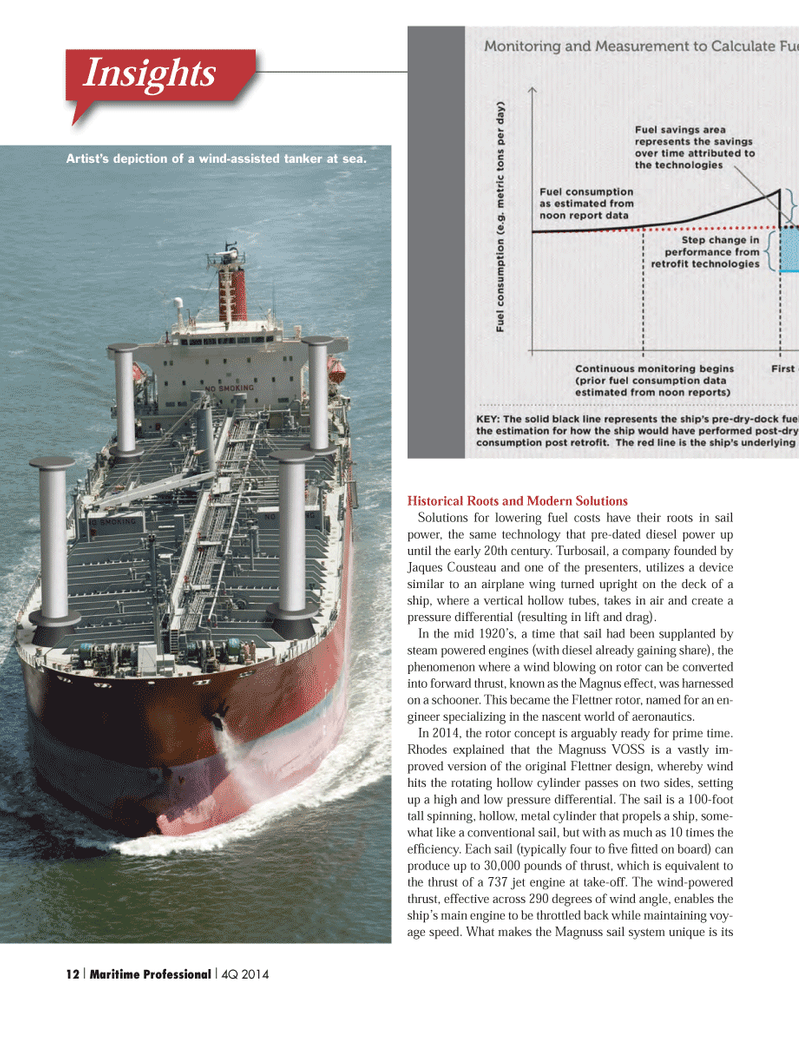
Page 12: of Maritime Logistics Professional Magazine (Q4 2014)
Read this page in Pdf, Flash or Html5 edition of Q4 2014 Maritime Logistics Professional Magazine
Historical Roots and Modern Solutions Solutions for lowering fuel costs have their roots in sail power, the same technology that pre-dated diesel power up until the early 20th century. Turbosail, a company founded by Jaques Cousteau and one of the presenters, utilizes a device similar to an airplane wing turned upright on the deck of a ship, where a vertical hollow tubes, takes in air and create a pressure differential (resulting in lift and drag). In the mid 1920?s, a time that sail had been supplanted by steam powered engines (with diesel already gaining share), the phenomenon where a wind blowing on rotor can be converted into forward thrust, known as the Magnus effect, was harnessed on a schooner. This became the Flettner rotor, named for an en- gineer specializing in the nascent world of aeronautics. In 2014, the rotor concept is arguably ready for prime time. Rhodes explained that the Magnuss VOSS is a vastly im- proved version of the original Flettner design, whereby wind hits the rotating hollow cylinder passes on two sides, setting up a high and low pressure differential. The sail is a 100-foot tall spinning, hollow, metal cylinder that propels a ship, some- what like a conventional sail, but with as much as 10 times the ef ciency. Each sail (typically four to ve tted on board) can produce up to 30,000 pounds of thrust, which is equivalent to the thrust of a 737 jet engine at take-off. The wind-powered thrust, effective across 290 degrees of wind angle, enables the ship?s main engine to be throttled back while maintaining voy- age speed. What makes the Magnuss sail system unique is its InsightsArtist?s depiction of a wind-assisted tanker at sea. 12 I Maritime Professional I 4Q 20141-17 Q4 MP2014.indd 121-17 Q4 MP2014.indd 1211/17/2014 3:16:14 PM11/17/2014 3:16:14 PM

 11
11

 13
13
